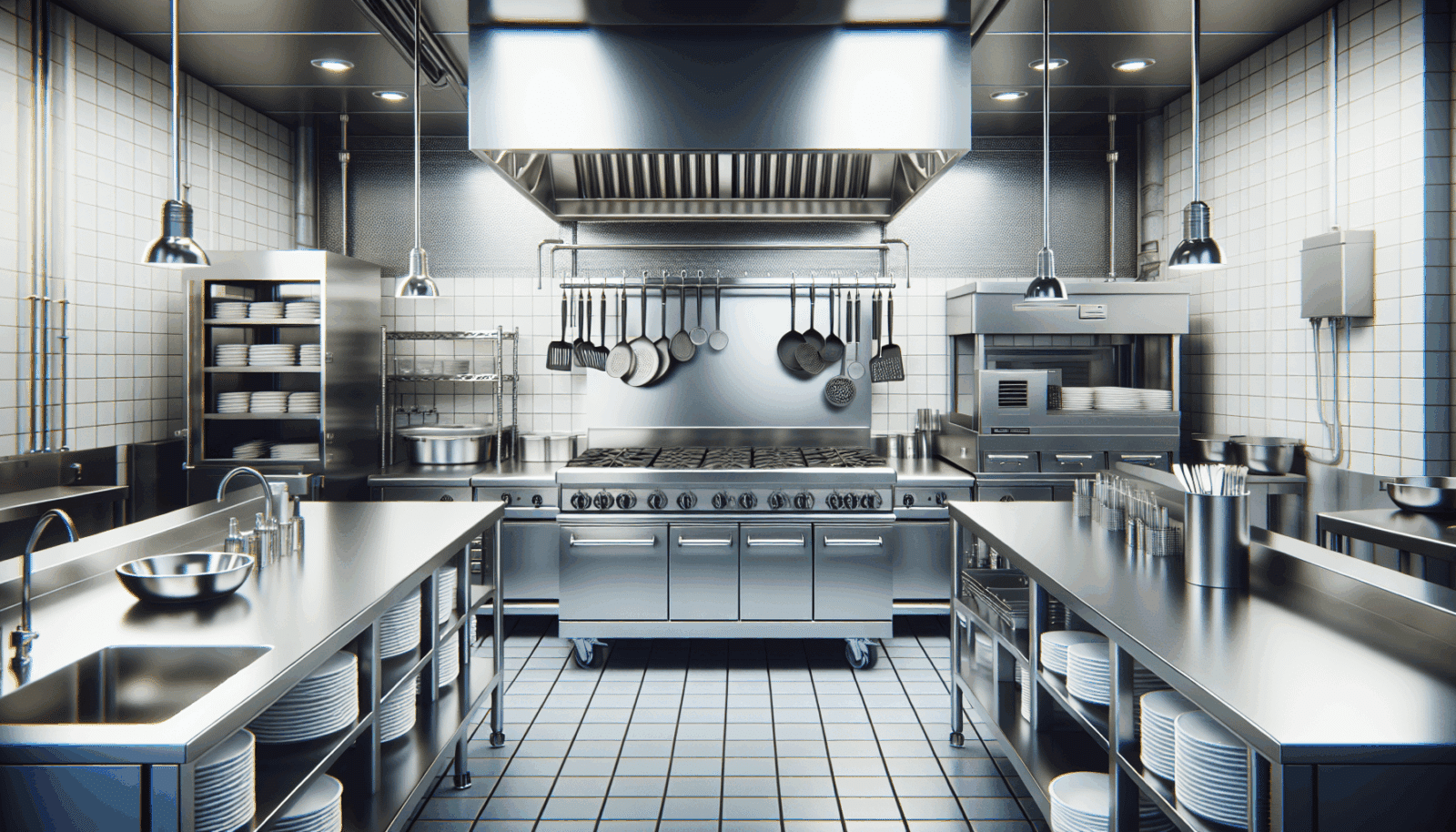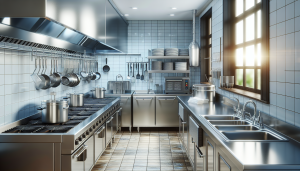Welcome to Utah Hood Cleaning‘s comprehensive guide on maintaining a clean kitchen hood. We know how essential it is to keep your kitchen safe and efficient, but it can be daunting for homeowners. That’s why we’ve crafted this article filled with practical tips and expert advice. So, if you’re ready to tackle Grease and grime, read on to discover how we can help keep your kitchen hood in top shape.
Understanding the Importance of Kitchen Hood Maintenance
A clean kitchen hood is more than just a visually pleasing feature. It plays a critical role in removing smoke, odors, and grease from your kitchen. Neglecting regular maintenance can lead to efficiency loss and potential safety hazards. Moreover, a clogged hood can become a fire risk, making upkeep essential for peace of mind.
By prioritizing regular maintenance, you’re ensuring that the air quality in your home remains fresh and free from pollutants. Not only does this benefit your health, but it also reduces the likelihood of costly repairs later on. Trust us, maintaining your kitchen hood is an investment in safety and functionality.
Establishing a Cleaning Routine
Creating a cleaning schedule tailored to your cooking habits is crucial. Consistent maintenance prevents debris build-up and ensures your kitchen hood operates at peak performance. So, how often should you clean? It truly depends on the frequency and type of cooking you do.
For most households, monthly cleaning is sufficient. However, if you’re a culinary enthusiast who frequently uses oils and fats, consider cleaning more regularly. Remember, a little effort now can save you from bigger headaches down the road.
Removing and Cleaning Filters
Filters are the heart of your kitchen hood. They’re designed to trap grease and particles, but they require regular care to remain effective. Start by removing the filters according to your model’s instructions. Once removed, soak them in hot, soapy water for about 15-20 minutes.
After soaking, scrub the filters gently with a non-abrasive brush to remove remaining grease. Rinse thoroughly and let them dry completely before reinstalling. Clean filters contribute significantly to the overall performance of your kitchen hood.
Inspecting the Ventilation System
The ventilation system is vital for directing air and odors out of your kitchen. Begin by checking the ducts for blockages or damage. Any obstructions can hinder airflow and reduce efficiency. It’s essential to repair any issues promptly to maintain proper ventilation.
Additionally, ensure that the exterior vent cap is free from debris and operates smoothly. Regular inspection can help spot potential problems before they escalate, keeping your kitchen safe and healthy.
Using the Right Cleaning Products
Selecting the right cleaning products makes all the difference. Harsh chemicals can damage your hood’s finish and components. Therefore, opt for products designed specifically for kitchen appliances.
Always follow the manufacturer’s instructions to avoid complications. If you’re unsure, feel free to give us a call for recommendations on the best products for your specific model.
Regular Professional Inspections
While DIY maintenance is effective, professional inspections offer an extra layer of assurance. Experts can identify problems that might be overlooked by the untrained eye. Consider scheduling a professional cleaning at least once a year.
A professional team like ours can ensure every aspect of your kitchen hood is in perfect working order. Our expertise and tools enable us to deliver a comprehensive clean, leaving your kitchen hood spotless and efficient.
Signs Your Kitchen Hood Needs Attention
It’s important to recognize warning signs that indicate your hood needs maintenance. Here are five key indicators:
- Increased Grease Build-Up: Visible grime on surfaces signals the need for cleaning.
- Unpleasant Odors: Persistent smells suggest the need for Filter replacement.
- Hood Vibration: Unusual vibrations or noises mean components might be loose.
- Reduced Suction: If suction seems weak, the ventilation system may require attention.
- Smoke in the Kitchen: Notices of smoke escaping mean it’s time for an inspection.
Addressing these signs promptly can prevent larger issues and potential hazards.
Eco-Friendly Cleaning Options
Sustainability is important, and there are eco-friendly products you can use for kitchen hood maintenance. Consider vinegar and baking soda as natural alternatives to chemical cleaners. Not only are they effective, but they’re also safe for your family and the environment.
Using eco-friendly options aligns with a commitment to maintaining a responsible and clean home. Plus, you’ll feel good knowing you’re doing your part for the planet while keeping your kitchen hood pristine.
Managing Lingering Odors
Handling tough odors can be challenging, especially if they linger after cooking. A simple solution is to simmer water with citrus slices or herbs like rosemary. This not only neutralizes odors but adds a pleasant aroma to your home.
Regular filter cleaning and ensuring proper ventilation also play a crucial role in managing smells. If odors persist, it might be time for a deeper cleaning or professional inspection.
Conclusion
For a clean and efficient kitchen hood, staying proactive is key. Regular effort and occasional professional help ensure your kitchen remains a safe and welcoming space. Ready to make sure your kitchen hood is in top condition? Reach out by phone # 801-853-8155 or Request a Free Quote.




